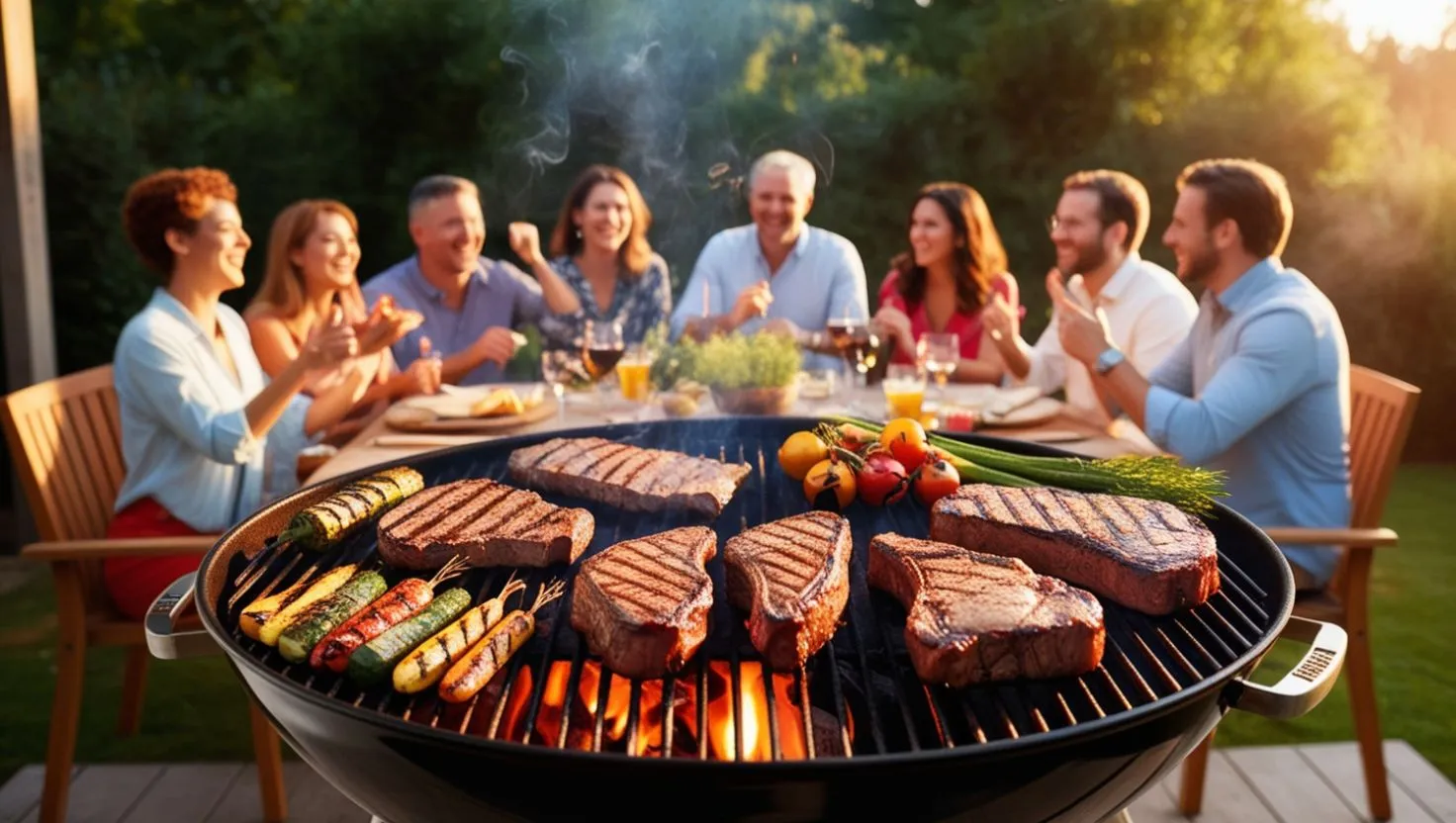
5 BBQ Cooking Tips You Need to Know
Tips for Perfectly Grilling Meat: 5 BBQ Cooking Tips You Need to Know
There’s an undeniable magic that happens around a grill. The sizzle of meat, the inviting aroma of smoky flavors, and the camaraderie of friends and family gathering for a feast create unforgettable memories. Whether you’re a seasoned pitmaster or just starting out, achieving perfectly grilled meat can sometimes feel like a daunting task. But fear not! With the right techniques and a bit of knowledge, you can elevate your grilling game and impress your guests with mouthwatering dishes.
In this article, we’ll explore five essential tips for perfectly grilling meat that will help you master the art of BBQ. From selecting the right cut of meat to mastering cooking times and techniques, you’ll find everything you need to ensure your next grilling session is a delicious success.
Understanding the Basics of Grilling Meat
The Importance of Meat Quality
When it comes to grilling, the foundation of a great meal lies in the quality of the meat. Choosing the right cut of meat is essential for achieving great flavor and tenderness. Here’s what you need to know:
- Choose Fresh, High-Quality Cuts: The first step to a successful grill is starting with fresh meat. Look for cuts that have a good balance of fat and muscle. Cuts like ribeye, filet mignon, and sirloin are excellent choices for beef, while chicken thighs and pork chops are great for poultry and pork.
- Look for Marbling: Marbling refers to the thin streaks of fat within the meat. This fat renders during cooking, keeping the meat juicy and flavorful. When selecting your cuts, don’t shy away from those with good marbling—it’s a sign of quality.
- Consider the Type of Meat: Different meats require different handling techniques. For example, chicken benefits from marination, while beef can shine with just a simple rub of seasoning.
Personal Insight
I remember the first time I grilled steaks for a family gathering. I picked up some pre-packaged cuts from the grocery store, thinking they’d suffice. But when they hit the grill, they turned out dry and chewy. Since then, I’ve learned the value of sourcing quality meat from local butchers who can recommend the best cuts for grilling.
Preparing Your Meat for Grilling
Marinades and Seasonings
Once you’ve selected your meat, it’s time to prepare it for grilling. Marinades and seasonings can significantly enhance the flavor profile of your dish. Here’s how to get the best results from them:
- Use Marinades: Marinades not only add flavor but also help tenderize the meat. A basic marinade can include olive oil, vinegar, herbs, and spices. For example: Ingredient Quantity Olive oil 1/4 cup Balsamic vinegar 2 tablespoons Garlic, minced 2 cloves Fresh herbs 1 tablespoon
- Tips for Effective Marinating:
- Marinate for at least 30 minutes, but for tougher cuts, aim for a few hours or even overnight.
- Avoid overly acidic ingredients, as they can break down the meat too much if left too long.
- Seasoning Just Before Grilling: If you prefer not to marinate, consider a simple dry rub. A blend of salt, pepper, garlic powder, and paprika can do wonders. Season the meat just before placing it on the grill to lock in the flavors.
Resting Time
After marinating or seasoning, it’s crucial to allow the meat to rest before grilling. Here’s why it matters:
- Importance of Bringing Meat to Room Temperature: Letting your meat sit for about 30 minutes before grilling helps it cook evenly. Cold meat can lead to uneven cooking and a less juicy final product.
- Recommended Resting Times: Here’s a quick guide on resting times based on the type of meat: Meat Type Resting Time Beef steaks 5-10 minutes Chicken 5 minutes Pork chops 5-10 minutes
Personal Insight
I’ve made the mistake of tossing cold chicken directly onto the grill, only to find that the outside was charred while the inside was still raw. Now, I always ensure my chicken (and all meats) are at room temperature before they hit the grill.
Mastering the Grill Techniques
The Right Grill Temperature
Temperature control is key to perfectly grilled meat. Understanding how to manage your grill can make all the difference:
- Different Cooking Zones: Familiarize yourself with your grill’s heat zones—direct and indirect. Direct heat is great for searing, while indirect heat is better for slow cooking or finishing thicker cuts.
- Using a Meat Thermometer: For precise cooking, invest in a good meat thermometer. It takes the guesswork out of grilling. Here are some target temperatures for various meats: Meat Type Safe Internal Temperature Beef steaks 130-145°F (medium-rare) Chicken 165°F Pork chops 145°F
Grilling Methods
Different meats and recipes may require different grilling methods:
- Direct Grilling: This method is perfect for quick-cooking foods like burgers and chicken breasts. Place them directly over the heat source for a few minutes on each side.
- Indirect Grilling: Use this for larger cuts like roasts or whole chickens. Place the meat away from the heat source and close the lid to allow for even cooking.
- Reverse Searing: For thick cuts of steak, consider reverse searing. Start by cooking the meat slowly on low heat, then finish with a high-heat sear for a perfect crust.
Timing is Everything
Cooking times vary by meat type, thickness, and grilling method. Here are some key tips to ensure your meat is perfectly cooked:
- Cooking Times for Various Meats: Here’s a quick reference for cooking times based on thickness: Meat Type Thickness Cooking Time (Direct Heat) Chicken breast 1 inch 6-8 minutes per side Ribeye steak 1 inch 4-5 minutes per side Pork chop 1 inch 4-6 minutes per side
- Using a Timer: A kitchen timer can be your best friend. Set it for each side to avoid overcooking. Always check the internal temperature towards the end of the cooking time to ensure it reaches the desired doneness.
Conclusion
Grilling is more than just a way to prepare food; it’s an experience that brings people together and creates lasting memories. By understanding the basics of meat selection, preparation, and grilling techniques, you can transform your grilling sessions into culinary triumphs.
In this article, we covered the importance of selecting high-quality meat, the benefits of marinades and seasonings, mastering grill techniques, and the significance of timing in achieving the perfect cook. With these tips for perfectly grilling meat, you’ll be well-equipped to wow your guests and enjoy every delicious bite.
Now it’s your turn! Grab your favorite cut of meat, fire up the grill, and put these tips into practice. Share your grilling adventures in the comments below, and let us know your favorite tips for perfectly grilling meat. Happy grilling!






